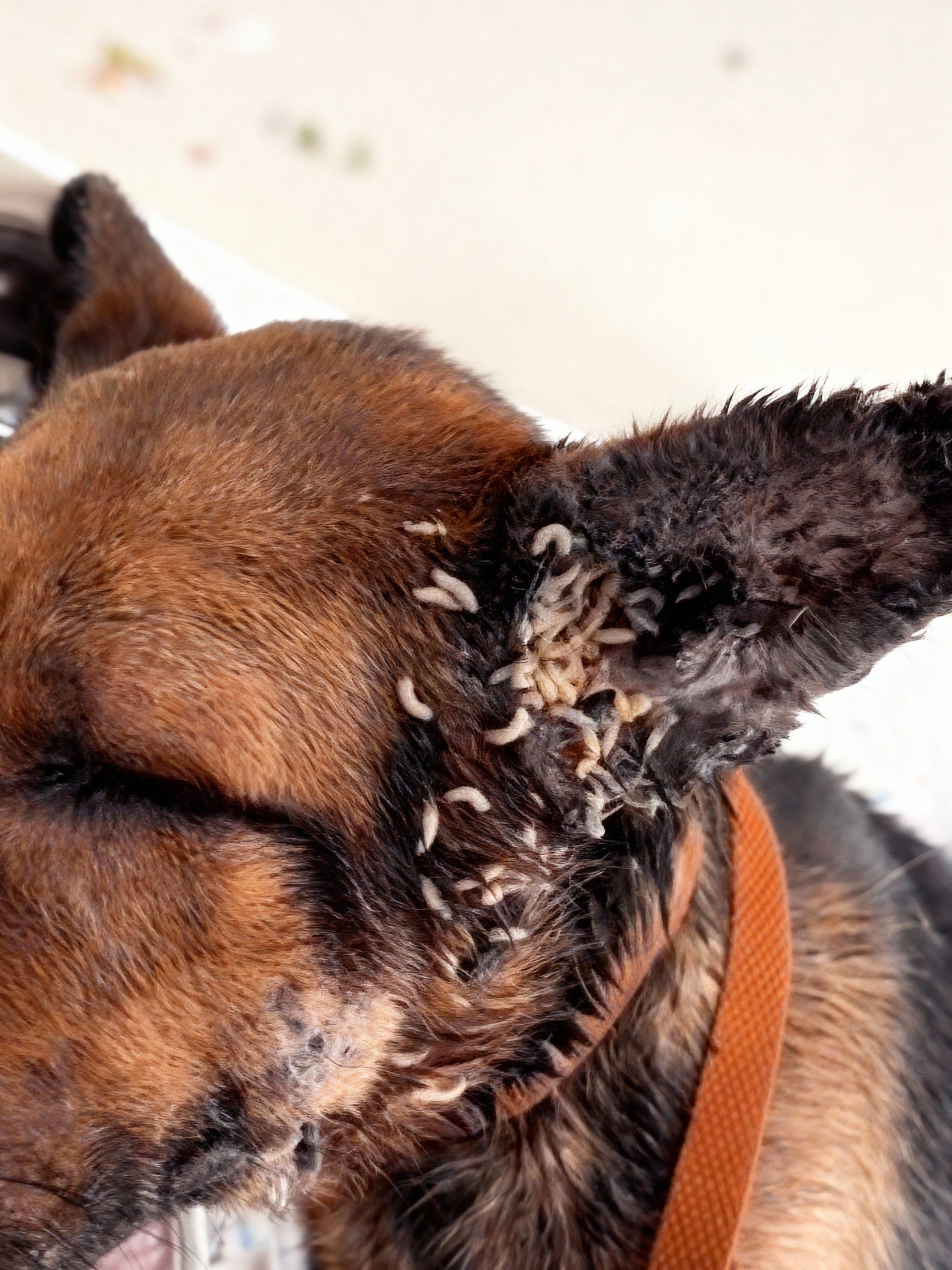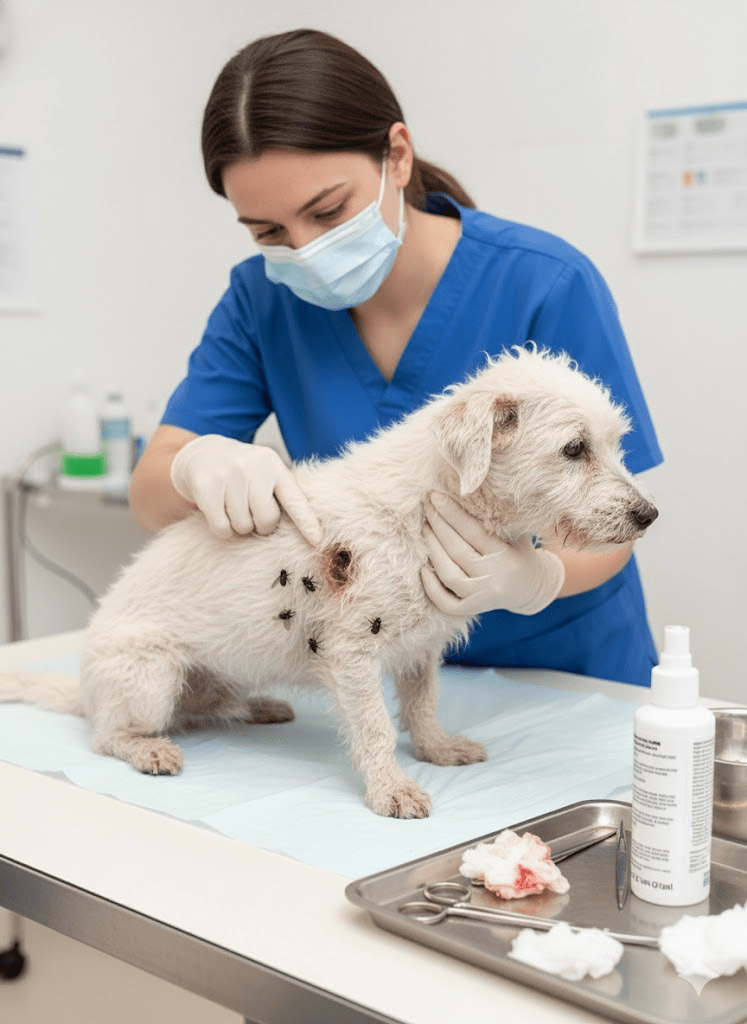It’s a sight no pet owner ever wants to witness: a beloved dog suffering from a maggot infestation, like the one tragically depicted in this image. Myiasis, the medical term for such an infestation, occurs when fly larvae (maggots) infest the living tissue of an animal. This condition is not only profoundly distressing to observe but can also lead to severe health complications and even be life-threatening if not addressed promptly and effectively. Understanding the causes, recognizing the symptoms, and knowing the immediate steps to take are crucial for any responsible dog owner. This article aims to provide a comprehensive guide to identifying and managing maggot infestations, emphasizing the critical need for prompt veterinary intervention and preventative measures to safeguard your canine companion’s well-being. The image serves as a stark reminder of the painful reality of this condition and the urgency required in its treatment.

Myiasis typically begins when flies, particularly blowflies or flesh flies, are attracted to open wounds, matted fur, or areas soiled with urine or feces on a dog. These flies lay their eggs in or near these moist, warm sites. Within a short period, often less than 24 hours, the eggs hatch into tiny larvae – the maggots. These larvae then begin to feed on the dog’s dead or necrotic tissue, and in more advanced cases, can burrow into healthy flesh. Dogs that are elderly, debilitated, have limited mobility, or have existing skin conditions are particularly vulnerable, as they may not be able to groom themselves effectively or move away from areas where flies are prevalent. The presence of any open wound, no matter how small, can serve as an entry point for these opportunistic parasites, highlighting the importance of regular health checks and diligent wound care.







